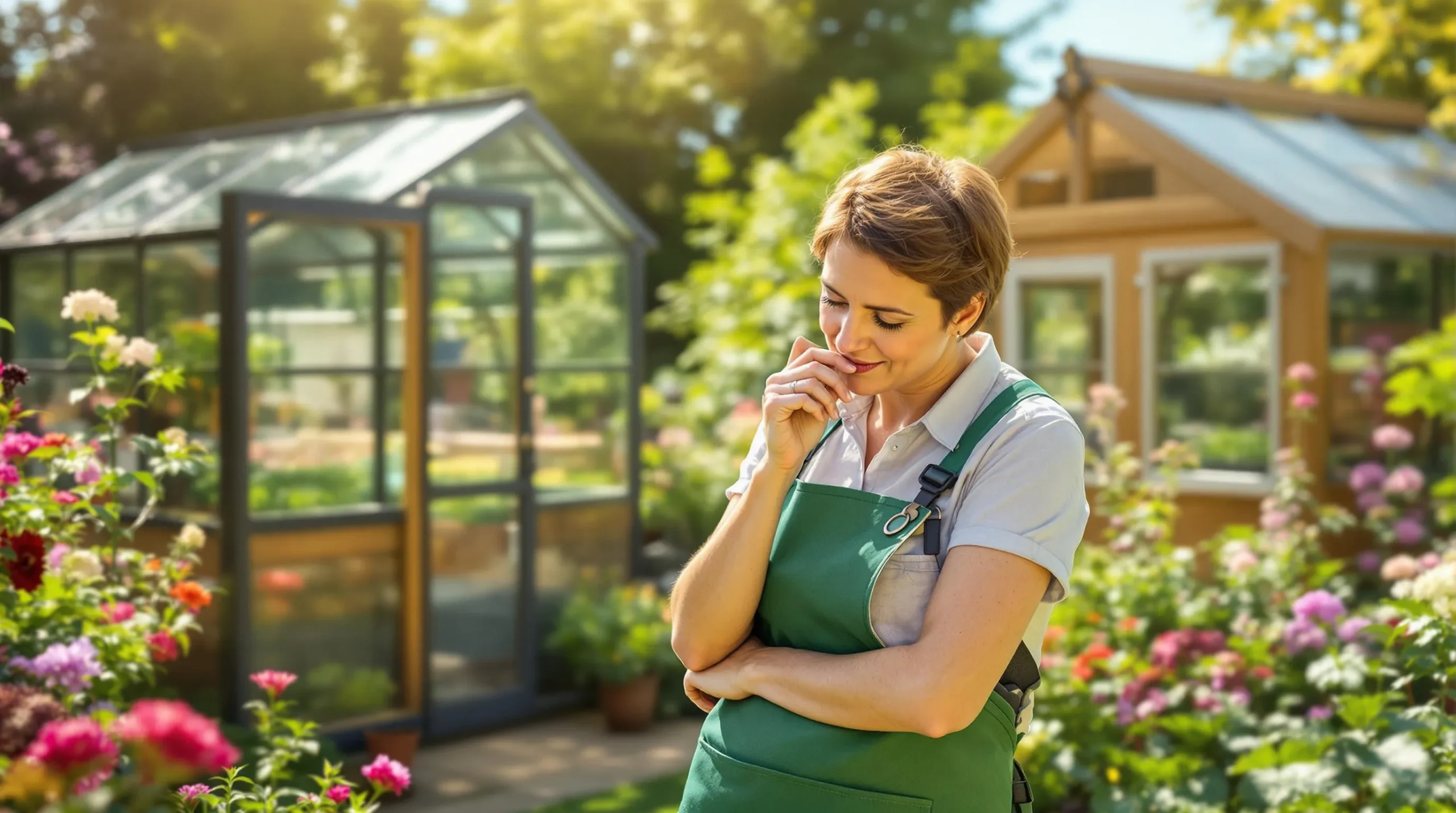
How to Choose Your First Greenhouse: A Complete Beginner’s Guide for 2025
Learn how to choose your perfect first greenhouse with our expert guide. Discover size, materials, and features to extend your growing season by 2-3 months.
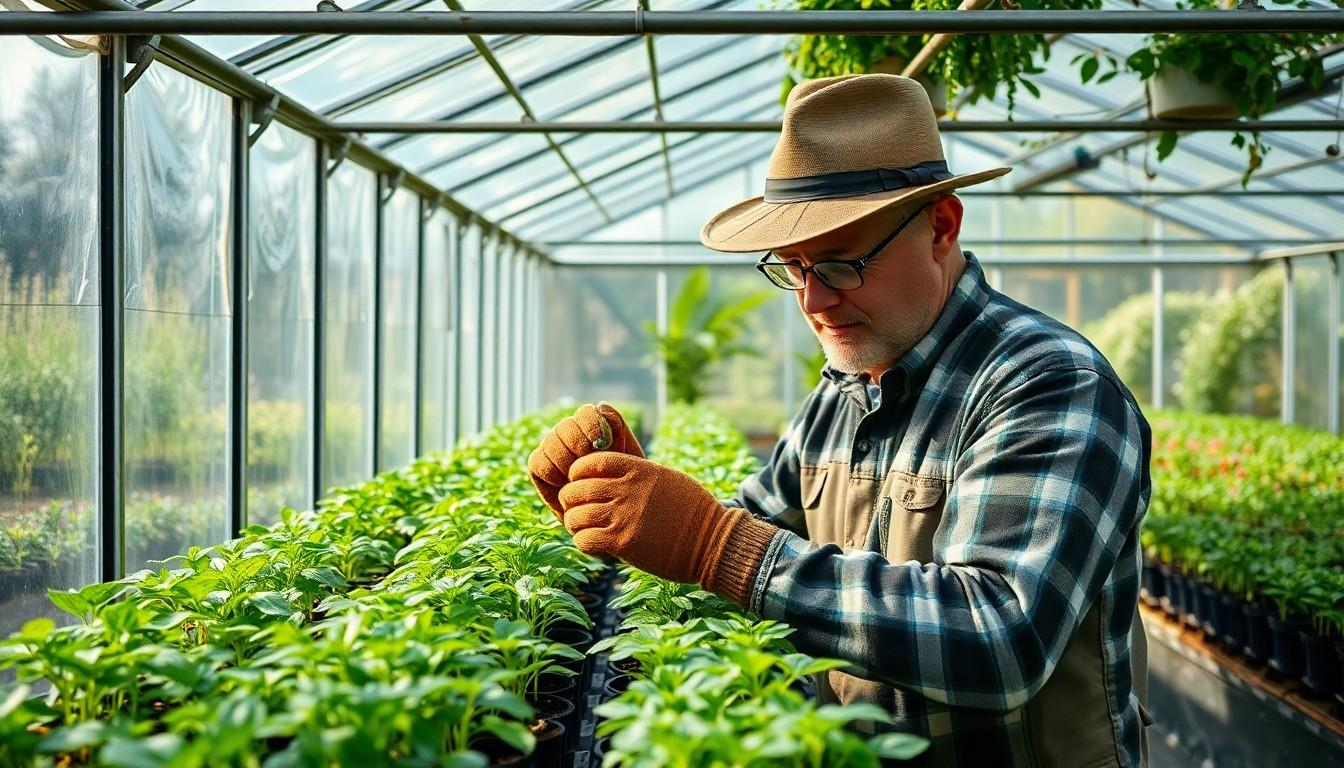
Healthy seedling propagation demands precise environmental control, and your choice of greenhouse structure plays a vital role in their success. Polycarbonate greenhouses have emerged as a game-changing solution for seedling propagation, offering superior insulation and temperature management that create ideal growing conditions year-round.
You’ll find that polycarbonate structures excel at maintaining consistent temperatures through their unique multiwall construction and insulating air pockets. These features help protect your delicate seedlings from sudden temperature fluctuations while providing optimal light transmission and diffusion – essential factors for strong, healthy plant development. Whether you’re starting your growing season early or propagating temperature-sensitive varieties, polycarbonate greenhouses offer the controlled environment you need for successful seedling establishment.
Polycarbonate greenhouse structures provide durability and create optimal growing conditions for successful seedling propagation.
Polycarbonate greenhouses offer superior insulation and temperature control through their unique construction. The panels create insulating air pockets that maintain consistent temperatures, protecting seedlings from harmful fluctuations.
Key advantages include:
Three primary panel options exist for greenhouse construction:
| Panel Type | Light Transmission | Insulation Level |
|---|---|---|
| Single-wall | 90% | Basic |
| Twin-wall | 80% | Medium |
| Multi-wall | 70-75% | High |
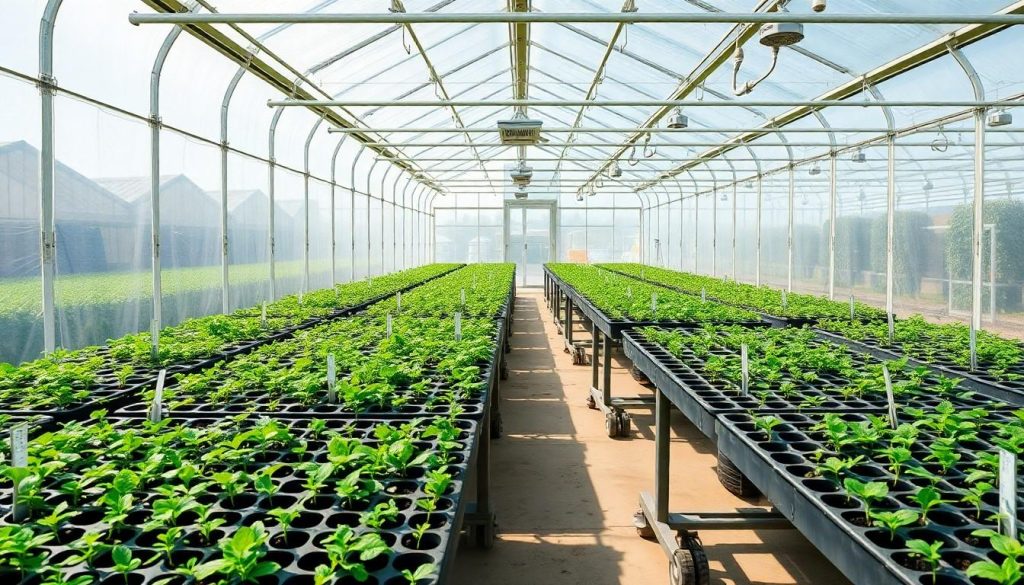
Successful seedling propagation requires specific equipment and materials in polycarbonate greenhouse structures.
Propagation trays serve as the foundation for seedling development in greenhouse environments. Standard plug trays provide individual cells for each seedling, optimising space usage and simplifying transplantation. Air-pruning trays promote natural root system development through strategic ventilation holes. Select trays based on:
Cocopeat functions as an effective growing medium for seedling propagation. The preparation process includes:
Temperature control systems help sustain growing conditions.
Overhead misting systems provide consistent moisture for seedling development:
Create dedicated seedling zones with portable carts or designated areas to maximise energy efficiency and maintain specific environmental conditions for different plant varieties.
A well-organised propagation area boosts efficiency and creates the perfect environment for seedlings to thrive. Setting up distinct zones in your greenhouse helps streamline tasks and supports healthy plant growth.
Create three dedicated zones in your greenhouse: propagation, growing, and storage areas. Position your propagation zone away from entrance doors to minimize temperature fluctuations. Space propagation benches 90cm apart to allow easy access and movement. Install a potting station near the storage area to streamline seedling preparation tasks.
Mount adjustable metal shelving units along the greenhouse walls for maximum space utilization. Install shelves at 45cm intervals vertically to accommodate different seedling heights. Use food-grade aluminum or galvanized steel shelving that supports 20kg per shelf to prevent sagging. Add anti-slip matting on each shelf surface to keep propagation trays stable.
Position oscillating fans at 3-meter intervals to maintain consistent air circulation. Install exhaust fans at the greenhouse peak and intake vents at ground level to create vertical air movement. Use automated vent controls to keep temperatures steady between 18-24°C for successful germination. Add horizontal airflow fans between shelving units to prevent dead air pockets.
Mount LED grow lights 15-30cm above propagation trays to supplement natural light. Set lighting timers for 14-16 hours daily during winter months. Use white LED lights with a color temperature of 5000-6500K for vegetative growth. Install light diffusion screens 2 meters above propagation areas to prevent direct sunlight from scorching seedlings.
| Environmental Factor | Optimal Range |
|---|---|
| Temperature | 18-24°C |
| Light Duration | 14-16 hours |
| Light Height | 15-30cm |
| Shelf Spacing | 45cm vertical |
| Aisle Width | 90cm |
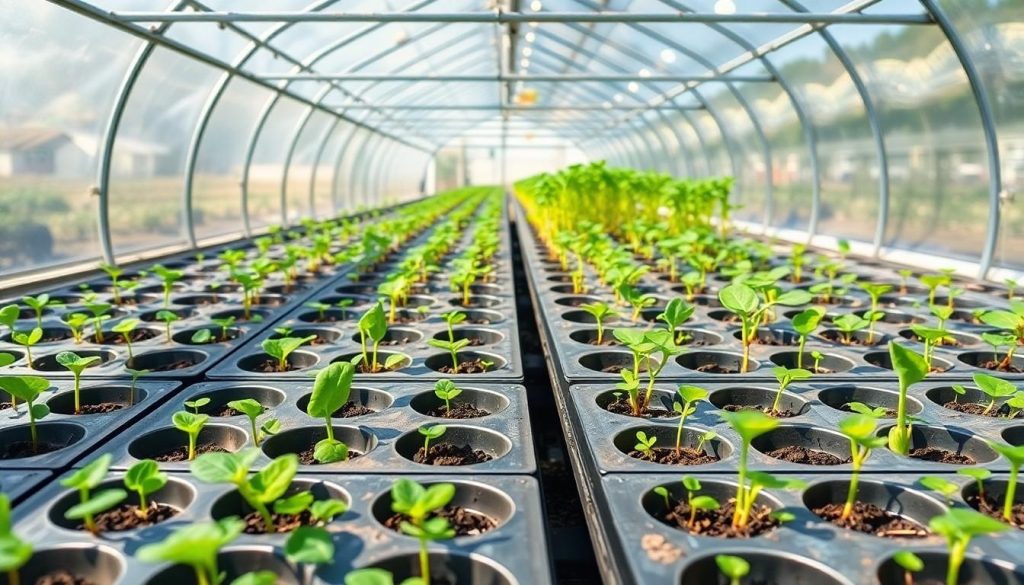
Successful seedling propagation requires precise methods and environmental control to achieve optimal germination rates.
Fill propagation trays with treated cocopeat until each cell reaches the top. Create a shallow depression of 3-4 cm in each cell for seed placement. Insert 1-2 seeds per cell based on the specific plant requirements. Use cell trays or plug trays with adequate drainage holes to support root development.
Monitor greenhouse temperature daily to protect sensitive crops like tomatoes from damage. Water vegetable seedlings 5-7 times per week using irrigation cans or overhead misting systems. Maintain consistent moisture levels in the growing medium without oversaturation.
| Temperature Control Factors | Specifications |
|---|---|
| Daily monitoring frequency | 2-3 times |
| Weekly watering frequency | 5-7 times |
| Seed planting depth | 3-4 cm |
| Light transmission rate | 80-90% |
Apply a balanced nutrient solution once seedlings develop their first true leaves. Feed young plants with a diluted fertiliser mix twice per week. Adjust feeding frequency based on plant growth stages:

Regular monitoring and adjustment of environmental conditions ensure healthy seedling growth in polycarbonate greenhouses. The following guidelines outline essential management practices for successful propagation.
Track seedling development through distinct growth phases:
Monitor these indicators daily:
Address these frequent issues promptly:
Prepare seedlings for outdoor conditions over 7-10 days:
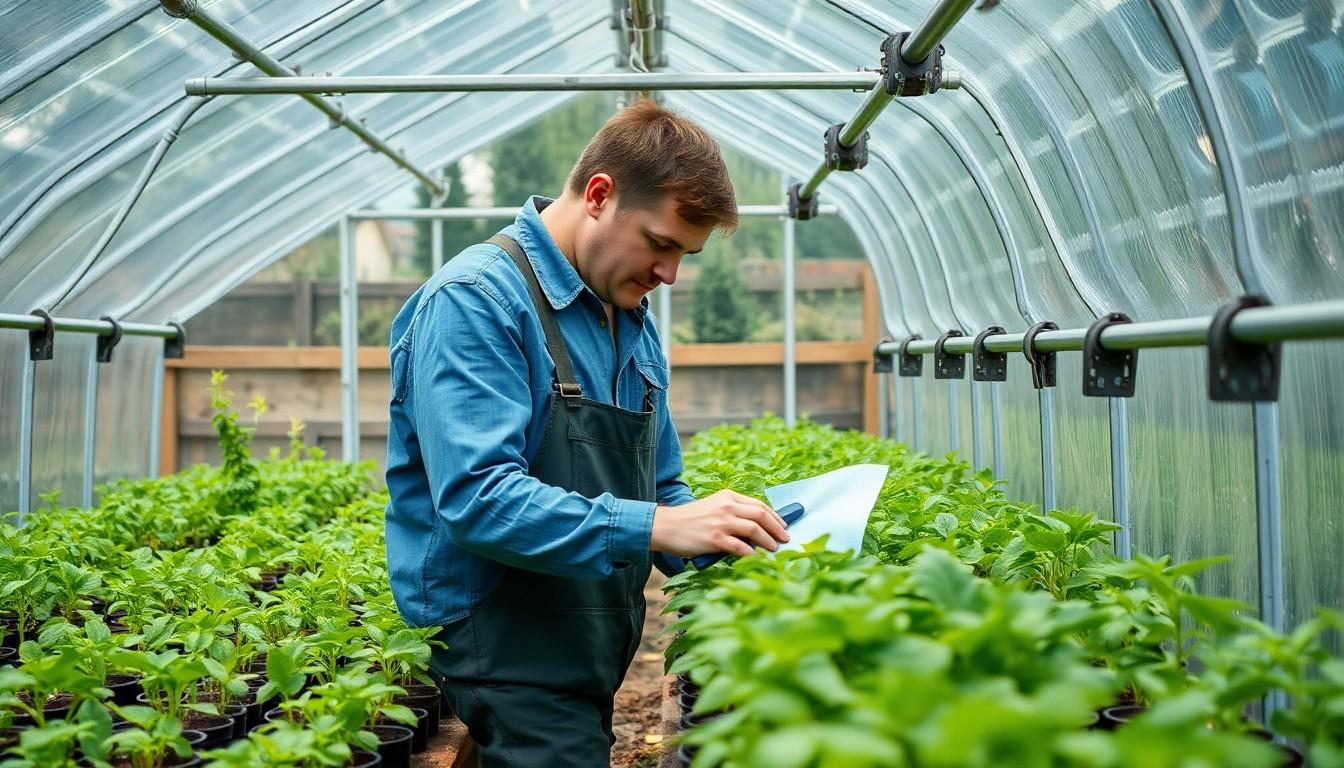
Regular maintenance of polycarbonate greenhouses ensures optimal conditions for seedling propagation. The maintenance schedule includes cleaning sanitisation climate control adjustments and seasonal considerations.
Clean your greenhouse at the start of each growing season to prevent disease spread. Remove all plant debris soil residue and algae from surfaces using a gentle cleaning solution and soft brush. Focus on these areas:
Monitor and adjust greenhouse climate controls based on temperature readings:
| Temperature Range | Required Action |
|---|---|
| Below 5°C | Activate heating system |
| 10-18°C | Maintain for temperate plants |
| Above 18°C | Increase ventilation |
| Above 25°C | Deploy shade cloth |
Inspect these climate control components monthly:
Adapt maintenance practices to seasonal changes:

Identifying and resolving problems early ensures successful seedling propagation in polycarbonate greenhouses.
Monitor and adjust these critical environmental factors:
Carry out these preventive measures:
Address these common structural issues:
For successful seedling propagation in a polycarbonate greenhouse, it’s important to create a well-organised space and stay on top of regular maintenance. Dividing the greenhouse into functional zones, fine-tuning climate control, and keeping everything clean will help your plants thrive.
A well-maintained greenhouse runs more efficiently, so routine checks and quick fixes are essential. Start with quality materials, keep the space clean, and adjust settings as the seasons change. With the right care, your greenhouse will provide the perfect environment for seedlings to grow from germination to transplanting.
By focusing on proper growing conditions and preventing disease, you’ll ensure your seedlings develop into strong, healthy plants, ready for a successful transition to their next stage.
Polycarbonate greenhouses offer superior insulation, optimal light transmission (80-90%), and UV protection. Their unique multiwall construction maintains consistent temperatures, whilst the light diffusion prevents seedling scorching. They’re also more impact-resistant than glass, making them ideal for year-round seedling propagation.
Seedlings should be watered 5-7 times per week, maintaining consistent moisture without waterlogging. Using an automated overhead misting system with timers ensures proper hydration. The frequency may need adjustment based on temperature, humidity, and plant stage.
For most seedlings, maintain daytime temperatures between 21-24°C and night temperatures around 16-18°C. Use thermostats and ventilation fans to regulate temperature. Different plant varieties may require specific temperature ranges, so monitor and adjust accordingly.
Use sterilised growing media and clean propagation trays. Maintain proper air circulation with strategically placed fans. Keep humidity levels in check and avoid overwatering. Remove any infected plants promptly and maintain good spacing between seedlings to prevent disease spread.
LED grow lights are recommended for supplemental lighting, especially during shorter winter days. Position lights 15-30cm above seedlings and adjust height as plants grow. Aim for 14-16 hours of light daily, using timers for consistency.
Move seedlings to growing zones once they develop 2-3 true leaves and show strong root development. This typically occurs 3-4 weeks after germination. Ensure proper hardening off before transitioning to reduce transplant shock.
Cocopeat is highly recommended for seedling propagation. It provides excellent water retention, good aeration, and proper drainage. Prepare the medium by thoroughly soaking and draining before use, ensuring it’s loose and well-aerated.
Use humidity sensors to monitor levels, aiming for 60-70% relative humidity. Install automated misting systems and ensure proper ventilation to prevent excessive moisture. Adjust humidity levels gradually as seedlings mature to prepare them for outdoor conditions.

Learn how to choose your perfect first greenhouse with our expert guide. Discover size, materials, and features to extend your growing season by 2-3 months.
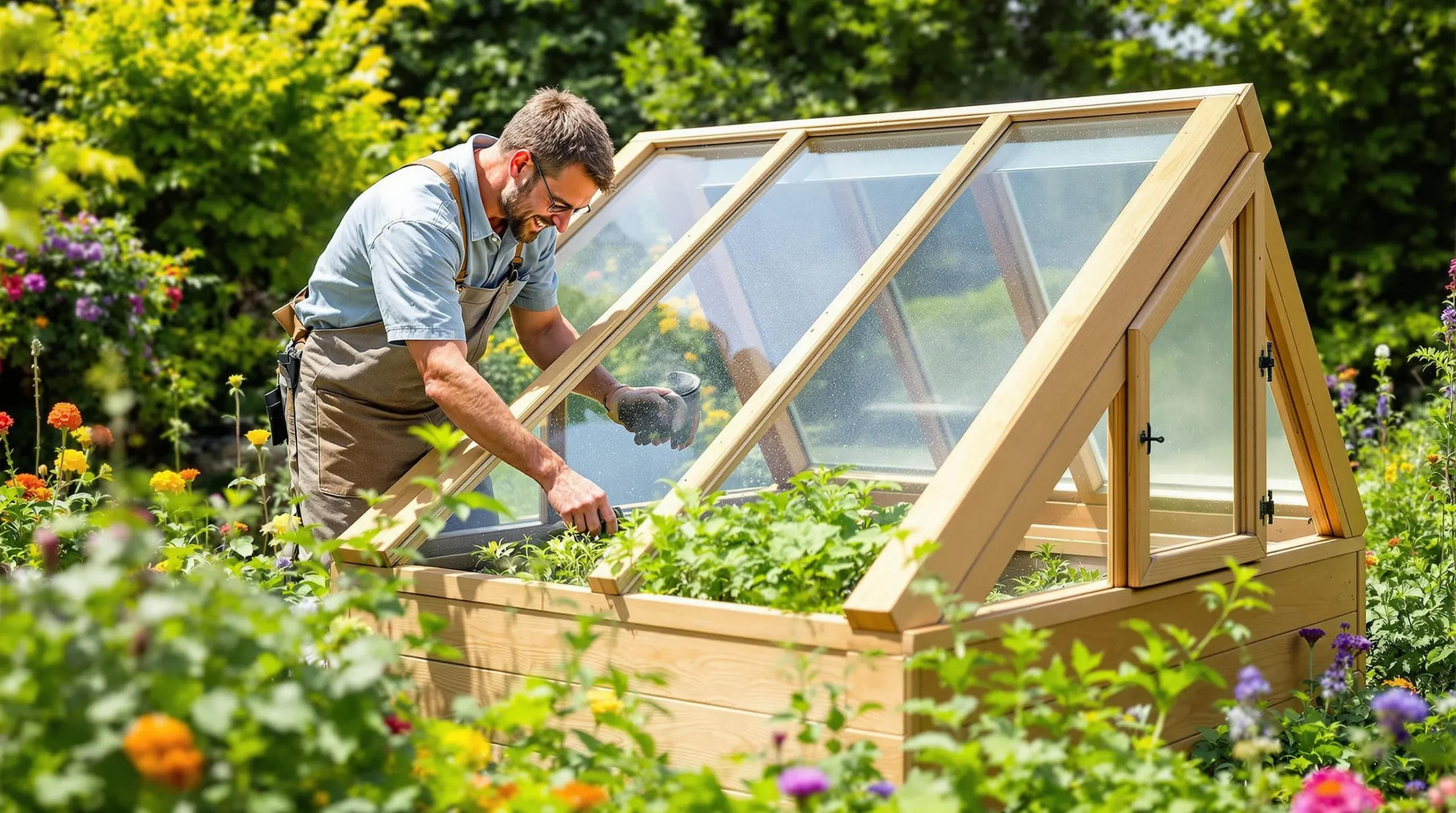
Learn how to make a cold frame to extend your growing season, protect plants in winter, and grow seedlings all year. Simple, cost-effective, and DIY-friendly!